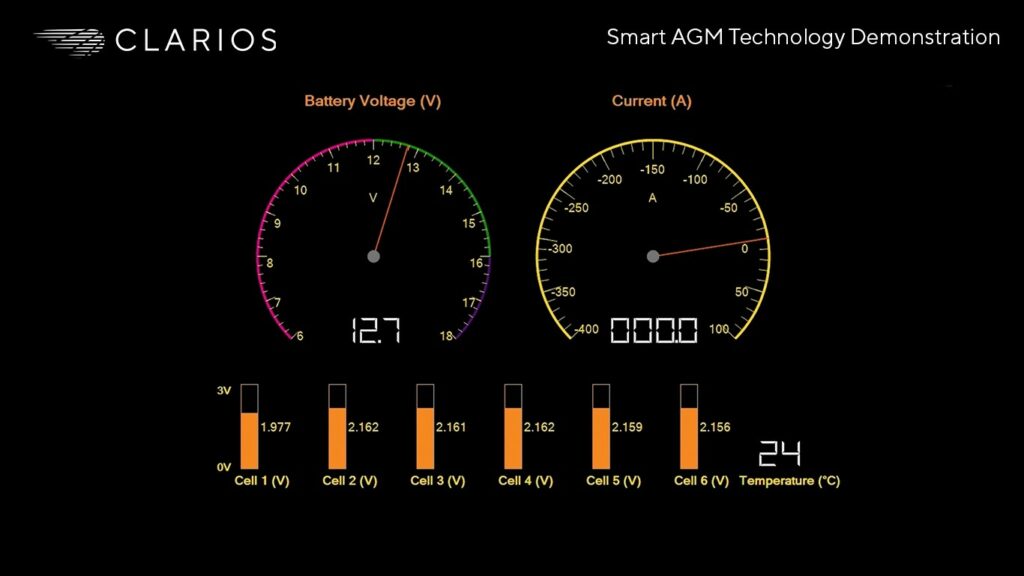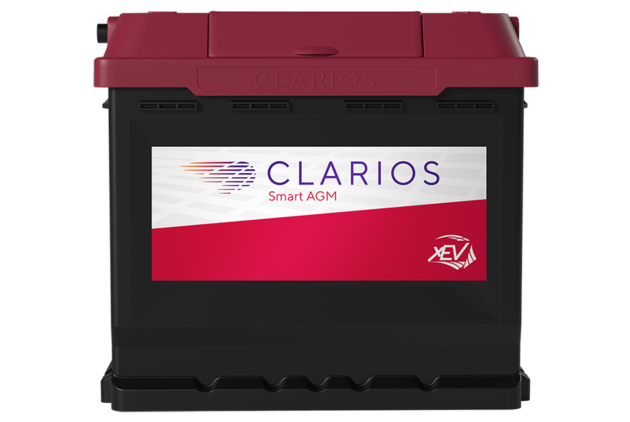Taking charge to eliminate battery failures
The electric trucks may be coming, but that won’t render the 12-volt batteries used to power today’s trucks redundant. In fact, it could render them all-the-more important as truck makers look to shift more accessorial power loads to the 12-volt system so as to maximize the range driven by the lithium-ion battery packs that will propel the trucks themselves.
“The low-voltage network continues to grow in complexity,” Mark Wallace, CEO of battery maker Clarios said during a recent interview with trucking journalists. The system is being asked to do more, such as power the increasing array of power-consuming devices and ever-larger screens found inside the cab and to provide driver comfort without idling.

It’s also there to provide critical safety functions. If, for instance, an electric truck is involved in a collision the high-voltage network is required to shut down to prevent injury to first responders. The low-voltage system will be relied on to provide critical functions such as unlocking automatic door locks, power communication devices to send SOS signals, and to provide steering and braking capabilities to get the truck safely off the road.
In fact, Clarios now views the 12-volt battery network as a part of a broader system, rather than a “black box” primarily relied on for starting the vehicle. And that means fleet maintenance managers will have to continue to manage, and even enhance, their battery maintenance programs.
Smart batteries
In a time when seemingly every component on the truck is equipped with sensors that communicate state of health and other parameters to fleet managers, batteries seem to have been forgotten. And it can be argued that knowing the status of a battery’s health could be as important, or more so, to a maintenance manager than knowing that of any other component.
Clarios is looking to change that and plans to bring the first ‘smart’ absorbed glass mat (AGM) battery to market next year. It’s currently field testing the battery, which will be equipped with electronics and software so it can communicate feal-time battery health information to maintenance managers, potentially eliminating battery-related downtime.
Fleet maintenance software company Pitstop, which specializes in predictive maintenance, is also working to address issues related to battery failures. Lead data scientist Shyam Krishnan, said most telematics offerings on the market only measure battery voltage, and not cranking amps or current, which is a limitation for predicting failures.
Nonetheless, the company is working on models that can: simulate and predict if the battery is weak and the voltage will drop in the near future; track inactivity of a parked vehicle and estimate how it will impact battery health and whether or not the vehicle will start; and an EV battery model that tracks discharge cycles and estimates degradation.
An easy scapegoat
Often batteries get swapped out because it’s an easy fix, but the underlying issue that caused the battery to fail goes undiagnosed. Chris O’Brien, chief operating officer of shop software provider Fullbay, managed a large private fleet of trucks and refrigerated trailers in a previous role. He remembers discovering rising battery failures were being caused by reefer tanks being allowed to run out of fuel.
“When you do that, it cycles the battery over. It’s trying to start,” O’Brien said. “It’s running over and over and sometimes, it just runs the battery completely out and the root cause was lack of fuel.”
Pitstop’s Krishnan agreed. “There are lots of situations where an alternator is the actual problem and the battery is just an unfortunate hostage of the situation,” he said. “There are also cases where wiring issues – all the way from birdsnesting of the wiring to severe rusting – and those issues are not detectable by sensors.”
Extreme temperatures can also take their toll on batteries.
“The environment plays a heavy role on a battery’s life,” O’Brien said. “Maybe you have to spec’ a higher quality of battery [in cold or hot regions].”
Fleet managers and drivers must also be mindful about parasitic loads that can drain a battery when the truck is parked. Safety lights, ELDs, cellphone chargers, CB radios and other electronics can all be a drain on battery life when the truck is not running.
“Maybe they have an ice chest plugged in to keep their lunch cool. All of these things can create a load on the system,” O’Brien said. Limiting parasitic loads when the truck isn’t in use can extend battery life and reduce downtime caused by dead batteries.
If the truck’s to be parked for an extended time, O’Brien suggested putting them on a float charger to ensure they’re still charged when the truck is put back into service.
In the shop
How a battery is installed and maintained also will go a long way toward determining its service life and total cost of ownership.
“Any time batteries are replaced or installed, they should have some battery protectant put on the terminals,” O’Brien recommended. Technicians must also be careful to secure the batteries, keeping in mind they’ll be subjected to plenty of vibration.
“Cheaper batteries don’t necessarily fare well [with vibration],” noted O’Brien.
When replacing a battery, it’s a good idea to also replace the related cables. Old, worn cables could cause battery failures, prompting a fleet to replace expensive batteries when the inexpensive cables were the actual culprit. “Anytime you do the batteries, it’s more than likely the cables are questionable,” O’Brien said.
“An electrical fire will burn a truck to the ground.”
Chris O’Brien, Fullbay
He has seen trucks with cables so tattered that he questioned their ability to provide a consistent flow of current and could even pose safety hazards.
“An electrical fire will burn a truck to the ground,” he pointed out.
Cutting corners and underspec’ing batteries is another common cause of problems. “It’s another one of those penny-wise, pound foolish situations and it’s inevitable that it’s going to fail,” O’Brien said of spec’ing undersized or cheap batteries.
Once the batteries are procured and installed, monitoring their use is key to predicting failures and proactively replacing them. But many shops continue to use primitive methods of record keeping, O’Brien said.
“There are fleets all across the U.S. and Canada where there’s probably a bin on a wall where the driver vehicle inspection reports are sitting and someone rifles through those to find a report where someone said ‘The batteries aren’t working’ or ‘I’ve jumped the battery three times today’. You’ve got to start tracking this stuff with some sort of technology to monitor and measure these intervals,” O’Brien insisted.
In his previous fleet job, he would use technology to flag when batteries may be coming to the end of their useful life, given their time in service and even the type of truck or TRU they’re powering.
“The software is telling you when you should consider inspecting and reviewing the battery based on trends,” he explained. “That’s a no-brainer these days. But a lot of heavy equipment is done on pen and paper, still to this day.”
Can battery problems be eliminated?
The advent of smart batteries and more advanced predictive maintenance platforms could go a long way toward eliminating battery failures and related downtime. But many maintenance managers accept battery failures as an inevitable cost of doing business.
“It’s one of those items that is cycled through, almost like tires,” O’Brien acknowledged. “If you’re going to buy cheap batteries it’s going to be one of those things, like tires, that you’re going to budget for and deal with.” But with some proper spec’ing, care when not in use, and maintenance, “I don’t think it’s a lost cause,” O’Brien said of pursuing a zero-failure target.

Have your say
This is a moderated forum. Comments will no longer be published unless they are accompanied by a first and last name and a verifiable email address. (Today's Trucking will not publish or share the email address.) Profane language and content deemed to be libelous, racist, or threatening in nature will not be published under any circumstances.